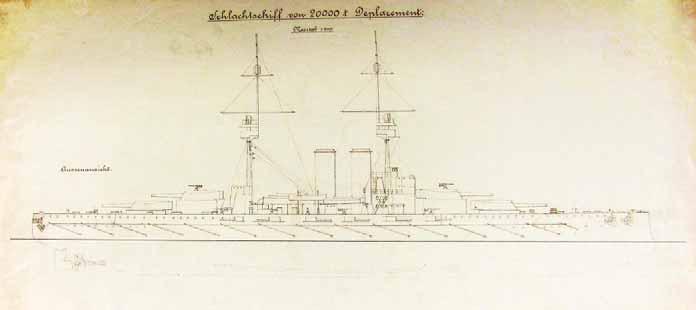the damaged railway facilities were under repair or even already repaired.464 The Italian Press wrote about the “barbaric enemy” after the Bombardment of Ancona. Later it turned out that while the Italian government declared Ancona an open city in 1914, the government itself did not proclaim this declaration. It’s worth a closer examination the report on the action of 24 May of the commander of the Viribus Unitis, Linienschiffskapitän Edmund Grassberger in the context of the alleged ventilation problem and lack of oxygen in the triple turrets described one year later. The Viribus Unitis which followed the Tegetthoff and was the second ship in Njegovan’s line, opened fire at 4:38 a.m. and ceased fire at 5:00 a.m. During this 22 minutes period she fired an unknown number of 30.5 cm and 15 cm projectiles. Grassberger, who was notorious for his manner and his long, pamphlet-like reports in which he criticized every defect, real or imagined; this time wrote a very short report, the shortest of all the battleship commanders. In his report he did not mention any problem with the turret ventilation.465 It is inconceivable that such a serious problem would not have been reported, especially because a less important problem with one of the Tegetthoff ’s 30.5 guns was reported, and this report was repeated in Njegovan’s report.466 After the action of 24 May, during the summer of 1915 the Austro-Hungarian Navy shelled Italian land targets on a few occasions, but in these operations only cruisers or smaller units participated. The largest battleships of the Navy remained in the well-defended naval base of Pola for (almost) the rest of the war. The Radetzkys until November 1918 left Pola only for gunnery practice in the Fasana Channel. The same was true for the Tegetthoff s until 8 June 1918. On 8 and 9 June 1918, the four dreadnoughts of the Monarchy left Pola for participating in the ill-fated “Operation Korfu” which ended prematurely due to the sinking of the Szent István. The Italian War: The Long Stalemate After its entry to the war Italy’s activity on the Adriatic intensified in June 1915. The Italians succeeded in occupying the tiny and remote Pelagosa Island on 11 July. The four newest and largest
Italian armored cruisers were deployed to Venice to support the Army’s operations and also to attack and destroy enemy naval forces in the Northern Adriatic. It was soon demonstrated how dangerous the confined waters of the Adriatic were for larger units lacking the proper torpedo protection system. On 7 July, the German submarine UB 14 under Austro-Hungarian flag (Germany and Italy were not yet officially at war) torpedoed and sank the Italian armored cruiser Amalfi. The Italian Navy had a plan for an attack on Ragusa, and this led to their second major loss: the armored cruiser Garibaldi en route from Brindisi to Ragusa was torpedoed and sunk by the Austro-Hungarian submarine U 4 commanded by Linienschiffsleutnant Rudolf Singule on 18 July. The Italian Navy planned also the occupation the Island Lagosta, but this was rejected. On 17 August, Austro-Hungarian cruisers and destroyers appeared at Pelagosa and shelled the Italian positions. The Italians decided for giving up the tiny, barren island and on the next day evacuated Pelagosa. Owing to the serious losses of the Italian Navy in the first months of the war, the reputation of the Regia Marina was ravaged in the eyes of the Italian public. After losing two armored cruisers, in September a serious accident occurred: the battleship Benedetto Brin blew up in Brindisi with a great loss of lives.467 By the end of the summer of 1915, the war in the Adriatic was a stalemate and this stalemate lasted practically until October 1918. In October 1915, Thaon di Revel resigned from the position of Chief of Staff and took command of the naval base of Venice. He returned to the top in February 1917 and became the Commander in Chief of the mobilized naval forces when the Commander in Chief of the Navy, Prince Luigi Amedeo was dismissed. The French liaison officer, capitaine de vaisseau Renè Daveluy, provided a perfect analysis of the situation by the end of August: “From these facts one can draw the following conclusion: submarines prohibit large warships from keeping to the sea, each party scratched their heads to ‘do something’ but one has not found any other thing to do except small operations which have no real significance and are, above all, intended to give the illusion one is acting. But, as one cannot fire indefinitely on the same bridge, the same station, the same railways, the same lighthouses and the same semaphores, it seems
— 134 —






























